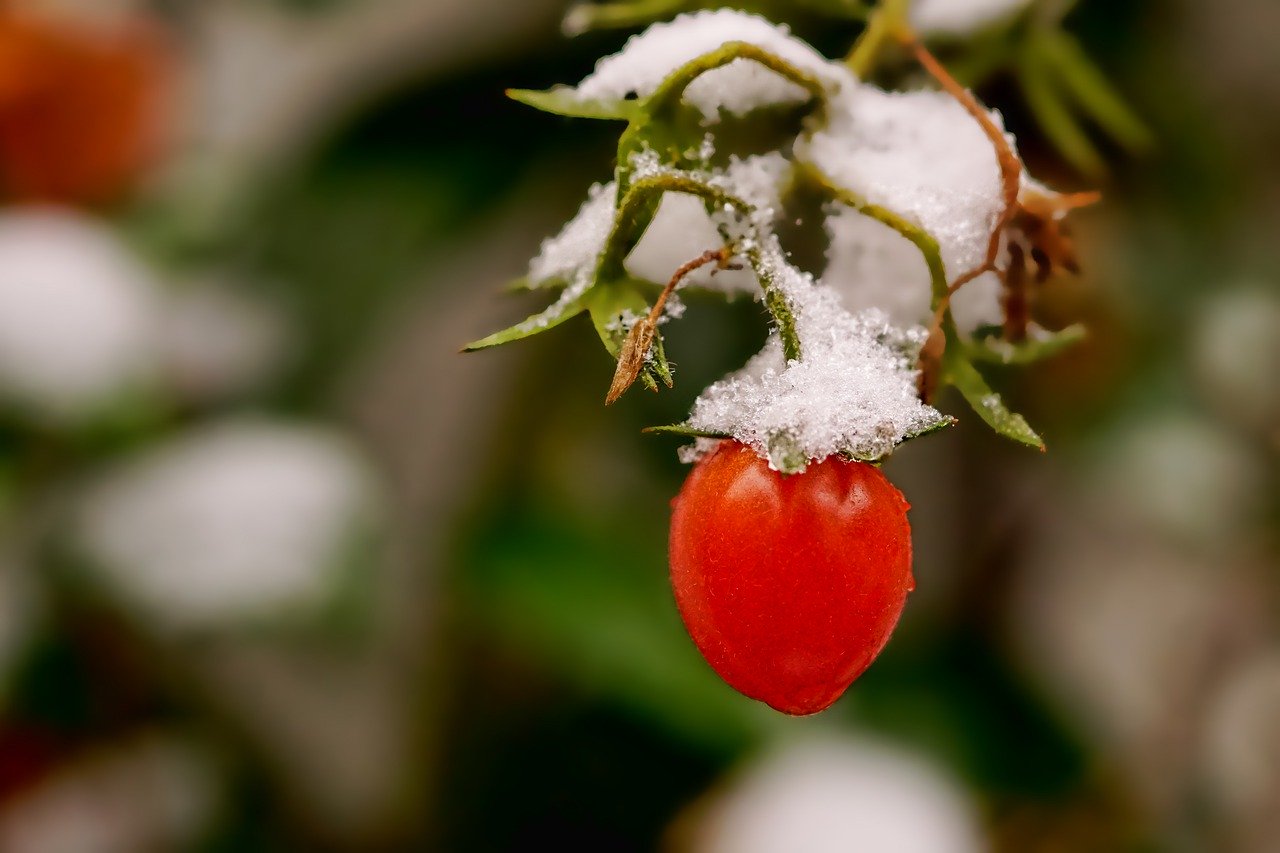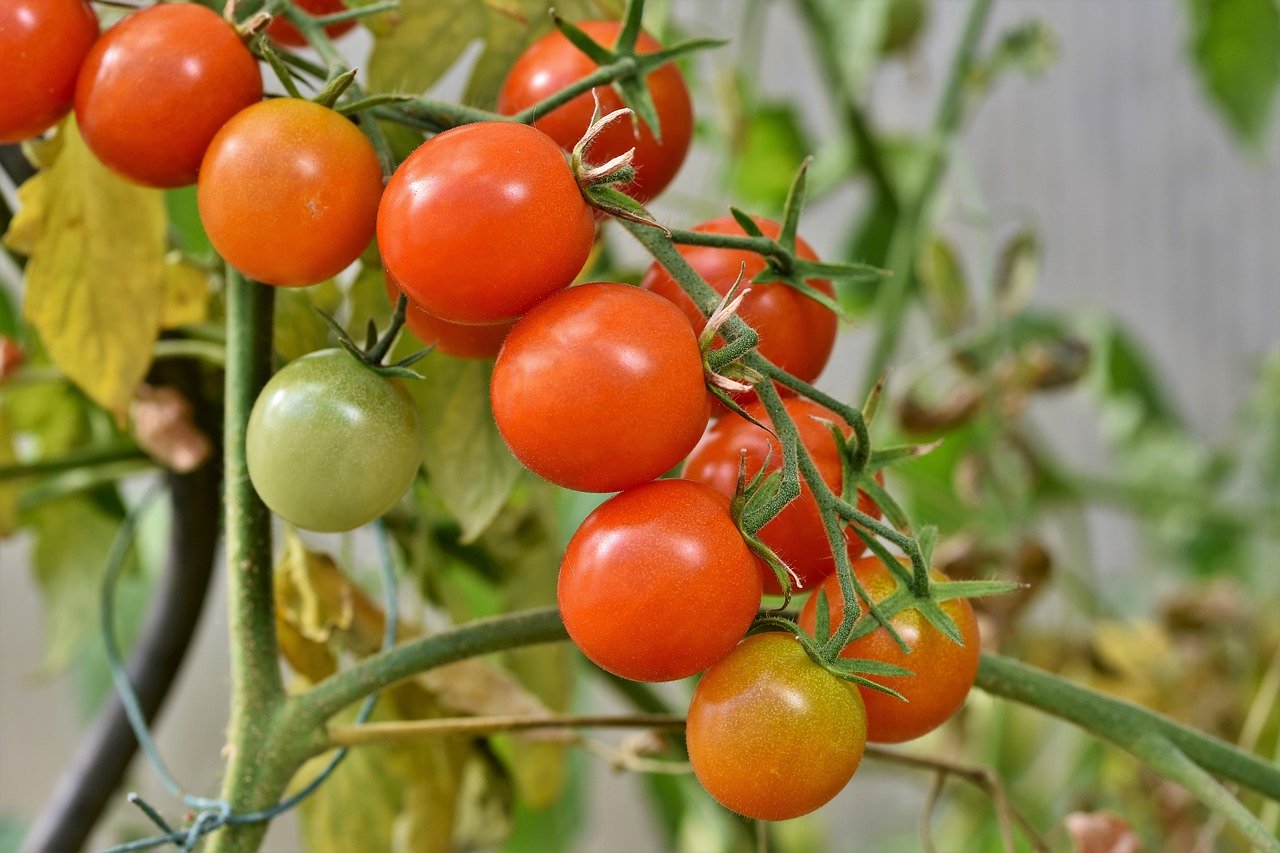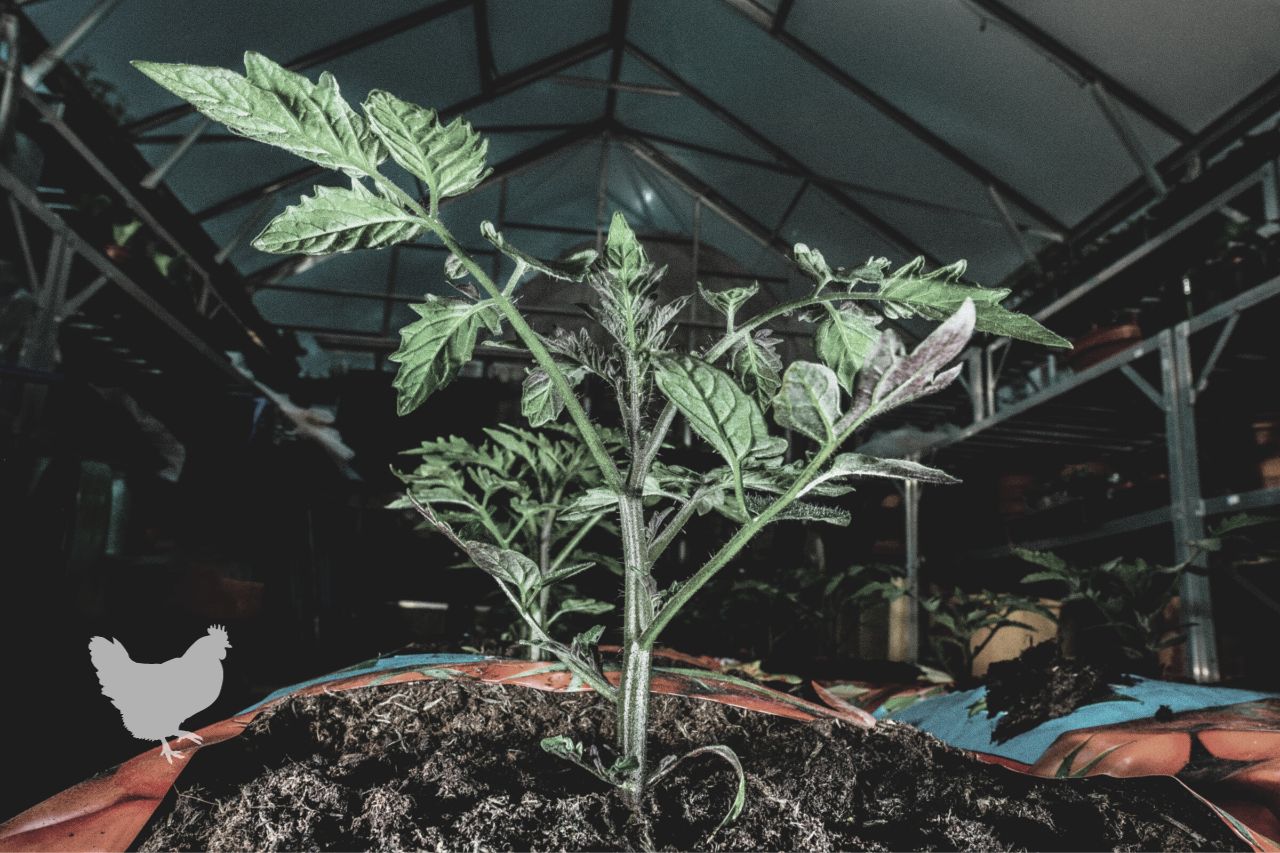Early in the spring and late in the autumn we are often surprised by overnight cold snaps. Springtime is the perfect time to start your tomato seedlings outdoors, and late in the autumn you may still be harvesting tomatoes from your established plants. What can you do to keep your tomato plants warm at night?
In this article, we explore this question and provide an array of smart solutions. Read on to learn more on how to keep tomato plants warm at night.
What You'll Learn Today
- Will A Cold Snap Kill Tomato Plants?
- 5 Tips To Keep Tomato Plants Warm At Night
- What Are The Options For Protecting Tomatoes Against Cold?
- Frequently Asked Questions
- Should you just pull up tomato plants and dispose of them when freezing temperatures begin?
- Why is it important to protect ripening tomatoes against colder temperatures?
- What can you do to protect sensitive tomato plants from frost and freezing temperatures?
- What role do leaves play in protecting tomatoes from cold temperatures?
- What can be done if a hard freeze is predicted, and traditional coverings may not be enough to keep extreme cold out?
- How do water jugs work to protect tomato plants from freezing?
- What if the weather is about to turn really cold, and you still have a lot of unripe tomatoes on your plants?
- What’s the best way to ripen tomatoes indoors?
- Do tomatoes have to ripen in order to be useful/edible?
- How can you make the most of your tomato harvest as temperatures drop?
- Good Protection Extends Your Growing Season
Will A Cold Snap Kill Tomato Plants?

A sudden cold snap may very well kill tomato seedlings, but established plants can usually manage to survive a cold night or even several. As long as the temperature of the soil stays at 60°F or higher during the daytime, the roots of an established plant will retain enough heat to prevent damage to the plants and your tomato plant from dying.
Extended cold will cause blossom drop and dropped fruit. When tomato plants are subjected to temperatures lower than 55°F for an extended period of time, they may set blossoms, but the blooms may simply fall off.
This may even happen to developed fruit on the vine. Take great care to protect your tomato plants against extended cold spells.
5 Tips To Keep Tomato Plants Warm At Night

To be sure of protecting your mature tomato plants against chilly autumn nights, follow these five smart tips:
1. Keep a thermometer in your tomato patch
Keep a thermometer in your tomato patch so that you are aware of the actual temperature. Place the thermometer in such a way that it is level with your plants vegetation.
2. Keep an eye on your weather forecast
Be prepared to cover your tomatoes when cold temperatures are predicted. If the forecast calls for temperatures between 30°F and 40°F, provide your plants with a cover. You may also wish to provide a heat source.
In this video, the presenter plants tomatoes around an oak tree and builds a framework for support. He also uses this framework to string lights for warmth and to support a drop cloth to hold the heat in on very cold nights.
Keeping Tomatoes Warm
3. Plant near a tree, building or fence
Although popular opinion would have it that tomatoes must be planted in full sun, the fact is, in areas such as Florida and Texas where the sun is harsh and punishing, it is better to follow the example presented in the video above.
Plant in light or dappled shade under a tree. Being near a tree, building or fence will also keep tomato plants warmer during cold snaps.
4. Keep your plants well watered
Water deeply when chilly, overnight temperatures are forecast. Plants that are well hydrated can tolerate cold temperatures better. This is especially true for tomatoes grown in straw bales which dry out quicker.
5. Don’t keep your tomatoes covered for an extended period of time
In the daytime, when the temperature rises above 50°F, uncover your plants.
What Are The Options For Protecting Tomatoes Against Cold?
There are many different types of frost protection available for tomato plants. The simplest is to cover your plants, whether seedlings or established, with a layer of cloth and a layer of plastic or a tarp.
Container plants or seedlings that have yet to be set out can be placed in a sheltered area.
In the video below, the presenter has covered his container tomatoes directly with plastic. This has mitigated some, but not all, damage.
If he had put a layer of cloth between the tomatoes and the plastic, this damage could have been prevented.
For best results, group container tomatoes together if at all possible. Toss a sheet over the whole lot and then cover with plastic.
Unexpected Frost And Tomato Damage
You’ll also notice that the presenter has all of his seedling tomatoes on top of a picnic table and garden benches.
If he had put them under the table and garden benches, covered the plants with a sheet and then tossed plastic over the table and benches, his plants would have been undamaged.
Commercial Solutions
In addition to homemade solutions, are also quite a few commercial options available to protect your tomato plants during cold snaps. Here are some easy, store-bought solutions:
1. Individual frost covers or plant covers
These are a good option for potted or container tomatoes. These prefab covers are a bit expensive, but if you only have a couple of plants in your garden or on your balcony, patio or deck, this type of cover is a good investment.
Look for covers made of Styrofoam, plastic or even plastic tubes filled with water. All of these are good choices. Carefully stored, they can be used year after year.
2. Row covers
These are a good option for protecting rows of tomatoes in your vegetable garden. You can purchase either tunnel row covers, which have a framework that prevents them touching the tops of plants, or floating row covers which simply lie on top of the plants.
Tunnel row covers are good to use with seedlings in the springtime because they also protect them against high winds and some insect predation. Floating row covers are easy to toss over established plants for light protection on cool autumn nights.
3. Use FreezePruf spray
This is a new, biodegradable product that can provide between 2° and 5° of protection against frost on tomato plants. It does this by dehydrating the plants’ cells, thus enabling them to tolerate freezing temperatures and frost.
4. Provide a thick layer of mulch
A heavy layer of mulch helps retain heat in the soil. It is also helpful in providing some shelter and protection for small tomato seedlings early in the springtime.
Don’t allow the mulch to touch the stems of tender young seedlings. Leave an inch or two of space all the way around. The added height of the mulch will help protect small seedlings against chill.
Frequently Asked Questions

Should you just pull up tomato plants and dispose of them when freezing temperatures begin?
A: Not necessarily. Even though tomato plants are warm-season plants and will stop producing new fruit when temperatures drop below 55 F, the fruit that is already on the plants will continue to ripen with just a bit of protection.
Why is it important to protect ripening tomatoes against colder temperatures?
A: Fruit that is already developing on the plant may split, become scarred or misshapen (catfaced) if exposed to temperatures below 55 F.
What can you do to protect sensitive tomato plants from frost and freezing temperatures?
A: You can prevent frost damage easily by covering plants with old bed sheets, spreads or blankets. Add an extra element of insulation by layering space blankets over cloth coverings. Space blankets, with the shiny side down, reflect 90% of the heat rising from the soil back to the plants.
What role do leaves play in protecting tomatoes from cold temperatures?
A: A tomato plant that has a great deal of foliage may experience frost damage on outer leaves, but you may find that tomatoes growing in the center of the plant remain undamaged thanks to the protection of the plant’s leaves. On the soil surface, chopped leaves can be used as mulch around tomato plants to help keep the soil warm and protect the plants’ roots against freezing.
What can be done if a hard freeze is predicted, and traditional coverings may not be enough to keep extreme cold out?
A: In the case of a hard freeze, you can place light bulbs under the coverings. If you are concerned about fire or don’t have access to electricity in your tomato patch, you can use water-filled jugs next to the plants. They will emit heat slowly to provide additional protection.
How do water jugs work to protect tomato plants from freezing?
A: One-gallon jugs of water can be partially buried in the soil next to the plants. It’s important that the top half of the sealed jugs be exposed to sunlight. The sun will heat up the water in the jugs through the day. Cover the plants with frost covers at dusk, and the jugs will emit heat throughout the evening.
What if the weather is about to turn really cold, and you still have a lot of unripe tomatoes on your plants?
A: Rather than waste your harvest, go ahead and pick your unripe tomatoes and bring them indoors to ripen. This is especially successful if you have light green, full size tomatoes.
What’s the best way to ripen tomatoes indoors?
A: There are a number of ways to ripen tomatoes indoors. You can pick the tomatoes and ripen them on a windowsill or in a closed paper bag with an apple or banana tossed in to help create the gases necessary for ripening fruit. Be sure to turn or lightly tumble the fruits daily to prevent flat/rotten spots developing.
If you have lots of tomatoes ripening on the vine, you may want to uproot the plants, shake off excess soil and bring whole plants indoors. Hang them upside down in your basement or garage to allow the fruit to continue ripening.
Do tomatoes have to ripen in order to be useful/edible?
A: There are quite a few recipes that make good use of green tomatoes, especially the smaller ones. Find a fried green tomato recipe online, or can your green tomatoes as chow-chow or some other sort of green tomato preserve.
How can you make the most of your tomato harvest as temperatures drop?
A: Mix-and-match the methods described here for protecting tomato plants against the cold, bringing larger fruits indoors to ripen, hanging selected plants in your garage or basement to allow the fruit to ripen and making tasty culinary use of green tomatoes. By combining all of these methods, you will extend your harvest time, and you will not be overwhelmed with massive numbers of green tomatoes all at once.
Good Protection Extends Your Growing Season
When you are well prepared to deal with cold snaps in the springtime and in the fall, you can expect a significantly greater tomato yield.
Being able to set your seedlings out a little earlier means an earlier harvest. Being able to protect your tomato plants against autumn chill means that you can continue harvesting for an extended period of time.
In South California, where I live, a simple cover is enough since the temperatures rarely reach too low.